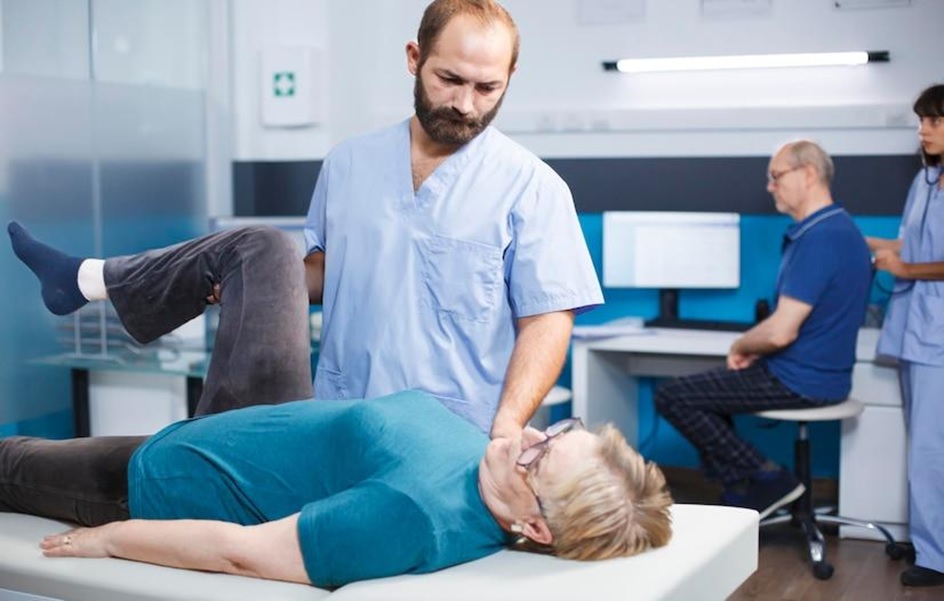
MRI (Magnetic Resonance Imaging) has transformed knee injury assessment with its non-invasive technology and detailed images, enabling accurate evaluation of ligaments, tendons, cartilage, and bones.
Essential for athletes and those with chronic knee issues, MRI provides critical insights for effective treatment. In summary, it is crucial for diagnosing and managing knee injuries, leading to better patient outcomes.
Common Knee Injuries And Their Impact On Daily Life
Knee injuries are common among individuals of all ages, with typical issues including ACL and PCL tears, meniscus tears, and patellar tendinopathy. These injuries can severely affect daily activities and mobility.
The emotional impact can also be significant, leading to frustration, anxiety, and depression, particularly for athletes facing potential sidelining. For those reliant on physical activity for health, knee injuries may disrupt lifestyles and increase the risk of obesity or cardiovascular problems.
Financially, knee injuries can result in high medical costs and lost wages during recovery. This highlights the importance of accurate diagnosis and effective treatment, where MRI is crucial.
Limitations Of Traditional Diagnostic Methods For Knee Injuries
Traditional diagnostic methods for knee injuries, such as physical examinations, X-rays, and CT scans, have significant limitations. X-rays can visualize bone structures but miss soft tissue injuries like ligament tears and meniscus damage, leading to undetected issues and longer recovery times.
CT scans offered at Tellica Imaging are more detailed than X-rays, with soft tissue evaluation, and involve radiation exposure, which raises concerns for younger patients. While physical examinations are crucial, they depend on the clinician’s experience and may overlook subtle injuries.
In contrast, MRI overcomes these limitations by providing high-resolution bone and soft tissue images, enabling accurate diagnoses and tailored treatment plans for advanced imaging solutions. Check out their website (https://tellicaimaging.com/).
How MRI Provides Detailed Imaging Of Knee Structures
MRI uses a powerful magnetic field and radio waves to create detailed images of the knee’s internal structures without radiation, making it a safer option for patients needing multiple scans.
Its exceptional contrast resolution differentiates soft tissues like ligaments, tendons, cartilage, and muscles, providing crucial information about injuries’ location, severity, and nature.
MRI captures images in multiple planes, offering a comprehensive view of the knee. This enables clinicians to assess the full extent of an injury, such as identifying a torn ACL alongside damage to the meniscus or cartilage. This holistic approach is vital for effective treatment planning and optimizing patient care.
Benefits Of Using MRI for Diagnosing Knee Injuries
The adoption of MRI for knee injuries significantly benefits healthcare providers and patients. Its non-invasive nature removes the need for risky exploratory surgery, appealing to those concerned about complications.
MRI also delivers rapid results, enabling timely diagnosis and treatment, which is crucial in sports medicine for minimizing downtime. In general patient care, quick assessments facilitate early interventions and improve outcomes.
Furthermore, MRI can detect subtle changes indicative of early degenerative conditions like osteoarthritis, allowing for preventive measures or early treatments that enhance patients’ quality of life.
Different Types Of MRI Techniques Used For Knee Assessment
MRI technology has evolved to include specialized techniques for specific diagnostic needs. Standard knee MRIs use a closed-bore magnet for comprehensive imaging, while innovations like high-resolution and functional MRIs enhance diagnostic capabilities.
High-resolution MRI improves image detail, aiding in assessing complex injuries such as cartilage lesions or subtle ligament tears. Functional MRI (fMRI) evaluates the knee’s dynamic function during movement, offering valuable insights for athletes and informing rehabilitation strategies.
Understanding MRI Reports For Knee Injuries
Interpreting MRI reports is essential for guiding treatment decisions. These reports detail findings such as the location and nature of injuries, using terms such as “tears,” “edema,” “effusion,” and “degeneration.”
Healthcare providers depend on radiologists for comprehensive report interpretation, ensuring subtle findings aren’t missed. Understanding MRI terminology helps patients engage in informed discussions about their diagnosis and treatment options.
Patients should actively seek clarification on their MRI reports from knee specialists. This approach enhances understanding and adherence to treatment plans, empowering patients to participate actively in their recovery and health decisions.
The Role Of MRI in Guiding Treatment Options For Knee Injuries
After diagnosing a knee injury with an MRI, the next step is to create an effective treatment plan. MRI provides essential information for tailoring interventions based on injury severity. For example, a complete ACL tear may require surgery, while a partial tear might be treated with physical therapy.
MRI findings also guide rehabilitation by identifying areas for targeted intervention. If significant cartilage damage is detected, the focus may be on strengthening surrounding muscles to improve support.
Follow-up MRIs can monitor healing and inform treatment adjustments, ensuring patients stay on track for a timely return to regular activities.
Potential Risks And Considerations Of MRI for Knee Assessment
While MRI is generally safe and non-invasive, patients should consider potential risks before the procedure. Metal implants may disqualify some individuals due to the strong magnetic fields.
Claustrophobia can be a concern with traditional narrow MRI machines, but open MRI options are available for added comfort. Discussing worries or pre-existing conditions with healthcare providers can facilitate a smoother experience.
MRI scans typically last 30 to 60 minutes and require patients to remain still, which can be difficult if they are in pain. However, the detailed imaging provided makes MRI a valuable tool for assessing knee injuries.

Conclusion: The Significance Of MRI in Accurately Diagnosing And Treating Knee Injuries
In conclusion, MRI is essential for assessing knee injuries. It provides detailed images that improve diagnosis and treatment planning. Its high-resolution capability enhances bone and soft tissue visualization, improving patient outcomes.
By addressing the limitations of traditional methods, MRI facilitates timely interventions that enhance recovery. Various techniques are available to tailor it to individual needs.
As medical imaging advances, MRI’s role in knee injury assessment will grow, offering more sophisticated methods for diagnosis and treatment. Understanding its importance empowers patients to engage in healthcare, leading to better outcomes and quicker returns to daily activities.




